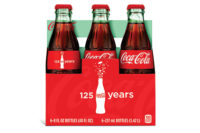For today’s consumer, researching products online is the new norm for consumer packaged goods (CPG). Consumers want to know more about the products they are purchasing well before they grab a shopping cart.
Whether through websites, mobile apps or social media and advertisements, shoppers have no shortage of places to find information. As a result, the pressure has been put on brands to ensure that products have a compelling representation across myriad touch-points and that the product messaging is consistent and accurate.
It is no surprise that the utilization of digital devices before, during and after the shopping trip has made the quality and availability of product content even more imperative, as it serves as the foundation for shoppers’ research, browsing and selection.
Recent findings from New York-based Deloitte’s “2015 American Pantry Report” underscore just how important digital interactions have become to CPG commerce. “The use of digital technologies in the shopping process used to be an interesting side note and emerging trend,” the report states. “But now the exception has become the rule, with the majority of consumers now using digital at one or more points on the path to purchase.” The report also notes that 55 percent of consumers now utilize technology to conduct product research.
To meet shoppers’ omni-channel expectations, beverage manufacturers should offer a complete digital representation of their products online and ensure that trading partners also have their brands’ product content up-to-date to most effectively market and sell their items.
The availability, accuracy and consistency of product content have a direct impact on consumer loyalty and sales; but taking control of this digital data is not without its challenges.
Content complexity catches up to manufacturers
According to a research report titled “Current and Consistent Product Data,” from Lisle, Ill.-based Gladson, almost 75 percent of manufacturers report that 15 percent or more of their product portfolio is updated each year as a result of changes to packaging, ingredients, marketing claims and regulatory compliance, among others. The volume of product updates makes the capture, hosting, updating and distributing of product images and information a time-consuming task.
Adding to product content challenges, many manufacturers lack the people, systems and processes necessary to execute robust and standard-compliant product-content management. The way product content is created and managed — typically piecemeal across different departments with disparate systems — further complicates a manufacturers’ ability to create and distribute this information in an efficient, scalable, flexible and consistent way.
Manufacturers are pushed to the edge of their capabilities to meet demand for product content with requests for items originating from their internal departments, as well as from shoppers and retailers.
Meeting digital content demand
As the demand for and complexity of product content continues to increase, many beverage manufacturers have partnered with content solution providers like Gladson to create, host, update and distribute their digital product images and information.
These product content providers help manufacturers establish one version of product truth across their enterprises by facilitating the use of up-to-date and accurate product content for everything from logistics and category management to marketing and eCommerce. Content solution providers also alleviate the burden placed on manufacturers in terms of content delivery. For example, Gladson can distribute manufacturers’ product content to retail partners and other third parties.
Best practices for managing product content
Whether outsourcing product content strategy and/or managing product content in-house, it’s important to follow consistent, repeatable, standard processes complete with multiple quality checks to ensure accuracy.
Improvements in product information management also should include the distribution of product content to internal and external constituents in ways that promote efficiency, scalability and adaptability. The following are some of these practices:
- A centralized facility and staff, either outsourced or in-house, to avoid duplication of effort and variances in process and accuracy.
- Infrastructure and tools to capture the dimensions, angles, formats and views required operational and promotional.
- A set of refined, documented, repeatable and standard-compliant processes. Consistency is critical; processes lose their validity if there are variances in technique.
- Expertise and continuous training to keep pace with evolving requirements.
- Flexibility in delivery to meet the specific file format requirements based on each platform or process the content is being used for.



